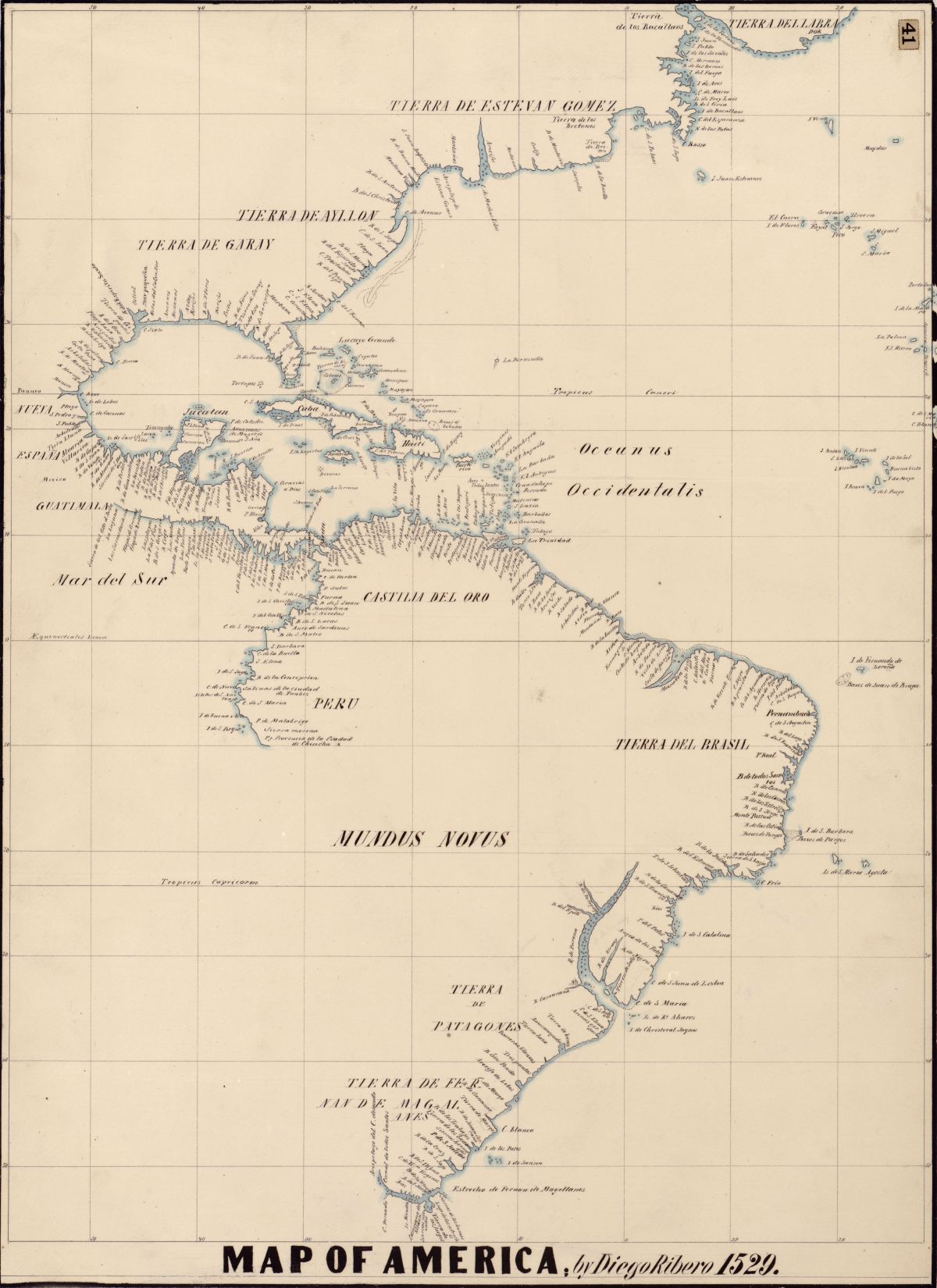Ponce de Leon is generally credited for the European discovery of Florida and mainland northern America in 1513, but his colonization attempt in 1521 was a failure. His landing party was not able to get established because of a ferocious attack by the Indigenous Calusa. Ponce was forced to flee back to Cuba where he died from wounds.
The first European to build a colony in Atlantic America, albeit for only a few months, was Spaniard Lucas Vásquez de Ayllón in 1526 at Sapelo Sound in coastal Georgia. He built his colony in the land of Chicora which had been explored by Pedro de Salazar and several other slave traders in the decade between Ponce’s two voyages.
The Vásquez expedition was made up of six ships and around six hundred people, including women, children, some African slaves, and a few priests. A baptized slave captured from the region, Francisco Chicora, was included as an interpreter. The spiritual contingent of the expedition was represented by Dominican friars Antonio de Montesinos and Antonio de Cervantes, and a lay brother named Louis.
The group departed for the mouth of the Jordon River in mid-July 1526 and arrived at Winyah Bay on August 9. Unfortunately, disaster struck almost immediately, as the flagship Capitana hit a sand bar anddisastrously sunkwith all its cargo. Fortunately, the crew and Ayllón made it safely to land, and began sending missions out to identify a good location for his colony. The various missions probed the area from Winyah Bay south to present-day St. Augustine. During one of these expeditions, Francisco Chicora deserted and made his way back through the forests to his own people.
Ayllón finally decided in early September to establish his settlement at a place he called San Miguel de Gualdape. Its location is debated but was probably along the Sapelo Sound on the Georgia coast. By the time Ayllón’s was ready to move, most of the settlers were already exhausted and on their last legs, having spent nearly a month in makeshift shelters. They had been continually soaked by rain, many were sick, all badly mosquito-bitten, and were, in general, miserable, and discouraged. Regardless, Ayllón ordered the healthy men to ride to the new site on horseback while the rest traveled by ship. When the parties were reunited at Sapelo Sound, the fittest began immediately to construct houses, an all-important church, storehouses for food, and pens for the livestock.
The colony of San Miquel de Gualdape was formally established during the festival of Saint Michael on 29 September 1526. However, the rough-hewn town survived for less than three months, plagued by food shortages, unhealthy living conditions, physical exhaustion, and untreated diseases. Most of their supplies had gone down with the Capitana and they were unable to barter or coerce food from the local people. It was too late for planting, and they were forced to suffer through several unseasonable cold snaps where temperatures dropped dramatically from 70 degrees to near-freezing temperatures in a matter of hours. Making matters even worse, Gualdape came under multiple attacks by the Guale led by none other than their former slave interpreter, Chicora.
The final blow came on 18 October, when Ayllón himself died, without a clear successor. One of the soldiers, Captain Francisco Gomez, assumed overall command, but his leadership was weak, and the exhausted settlers soon broke into warring factions of disgruntled aristocrats. As Peck (2001) tells it:
“Capt. Francisco Gomez and the assigned alcalde of San Miguel (the Municipal magistrate) led the group loyal to Ayllón and his mission, but a renegade faction of the discouraged and desperate settlers, headed by Gines Doncel, a minor noble from Santo Domingo, soon obtained the upper hand. In the confused infighting that followed, Doncel once even summarily arrested Gomez and the Alcalde and, for lack of a jail, locked them in Doncel’s house. During this period of anarchy, a group of famished and desperate settlers attempted to move into a nearby Indian village and impose upon the natives for food. Garcilaso de la Vega reports the Indians soon tired of this and, after the settlers had feasted for several days, slew them all in a single night attack. In the chaotic situation that followed (with black slaves setting fire to Doncel’s house, Gomez and the alcalde regained control, but facing reality decided to abandon the colony and return to the Antilles.”
The evacuation began in the latter part of October, with the last ship departing in mid-November. It was so cold by the time they left that seven men on the Santa Catalina died of exposure on the way home. Of the 600 – 700 original settlers, only 150 survivors reached Hispaniola or Puerto Rico that winter.
Illustration: Detail of the American Coast Map by Diego Ribero (1529), where the southern half of the east coast of the current US is named Tierra de Ayllon. United States Library of Congress’s Geography & Map Division
Bibliography:
Hoffman, P. E. (1984) The Chicora Legend and Franco-Spanish Rivalry in La Florida. The Florida Historical Quarterly. 62 (4): 419-438.
Johnson, J. G. (1923) A Spanish settlement in Carolina, 1526. The Georgia Historical Quarterly, & (4): 339-345.
Peck, D. T. (2001) Lucas Vásquez de Ayllón’s Doomed Colony of San Miguel de Gualdape. The Georgia Historical Quarterly. 85(2):183-198.
